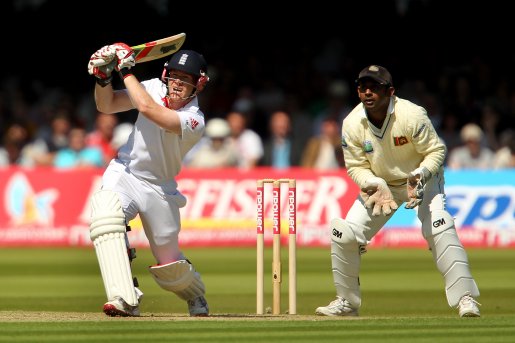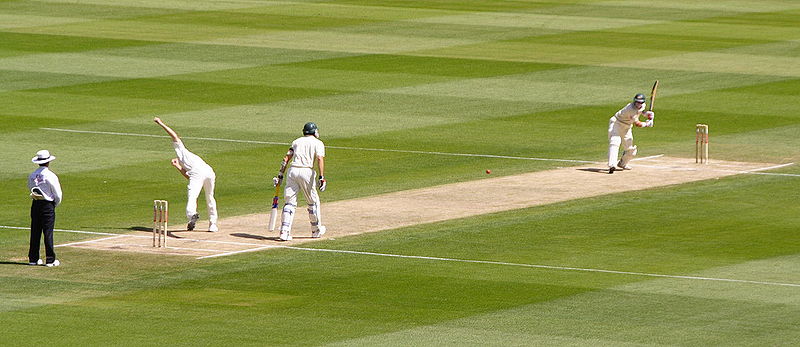The Basics of Cricket


As part of our Cricket Fortnight, we are releasing a number of blog posts about the great English sport. Cricket is one of the most the most misunderstood sports in the world, with a set of rules so complicated even experts struggle. However, the basics are not all that difficult to understand. We have created this basic guide to the rules of cricket for anyone who says it is too complicated to understand.
Don't forget to also enter our brilliant competition for your chance to win four tickets to watch the England cricket team play at Lord's. Enter here.
Basic Rules
- There are two teas of 11 players each.
- At the start the two team captains toss a coin to decide which team bats first and which team bowls and fields first.
- The batting team send out two batsmen, and the fielding team choose someone to bowl
- The first bowler bowls six balls to the batsmen- this is called an ‘over'. At the end of each ‘over' the bowler changes.
- The aim of the batsmen is to hit the ball for ‘runs'. The aim of the bowler and fielding team is to try and get all the batsmen on the other team out for as few runs as possible.
- Once the batting team is all out or uses up all their overs, the two teams switch round, and the fielding team takes a turn to bat.
- The team with the most runs at the end of the match wins.

Getting Runs
Batsmen can get runs in a number of different ways.
- If they hit the ball with their bat over the ‘boundary' (the edge of the playing field) without it bouncing then they get six runs.
- If they hit the ball and it bounces but still goes over the boundary, they get four runs.
- If they hit the ball and it doesn't reach the boundary they can run to the other end of the ‘pitch' (the rectangular brown bit pictured above) and back again as many times as they can before the fielding team can retrieve the ball. Each time they reach the other end of the pitch they get a run.
Getting Batsmen Out
The fielding team's aim is to get the batsmen out. The batsmen can get out in a number of ways, but these are the main four:
- Bowled (pictured right): The ball hits the ‘wicket' (three pieces of wood stuck in the ground that the batsman has to try and protect) and the ‘bails' (two smaller bits of wood balanced on
 top) come off.
top) come off. - Caught: The batsman hits the ball and a fielder catches it without it touching the ground.
- Leg Before Wicket (LBW): The ball hits the batsman's leg when it is in front of the wicket.
- Run Out: The batsman tries to make a run but a fielder throws the ball and it hits the wicket before the batsman reaches it.
Different Forms of Cricket
There are three main forms of cricket, each varying in how long they last:
- Twenty20 (also known as 20/20 or t20): Each team has a maximum of just twenty overs to bat (unless they are all out before then). This is a very short version of the game, usually only lasting about two and a half hours.
- One Day: Each team has a maximum of either 40 or 50 overs to bat (depending what type of One Day game is being played). This usually lasts for most of the day (hence the name).
- Test Match: These are five days long, with seven or eight hours of cricket each day. Both teams get an unlimited number of overs to bat for, until all their batsmen are out or they decide to ‘declare' and let the other team bat. Each team also gets to bat twice, and each time is called an ‘innings'. Both team's total number of runs are added together to decide the winner.
So there we have the basic rules of cricket. Not too complicated eh? Chances are you are still very confused, but either watching or playing the sport is by far the easiest way to pick up the rules. So why not give it a go sometime.
To see loads more posts that are part of our Cricket Fortnight, click here.








